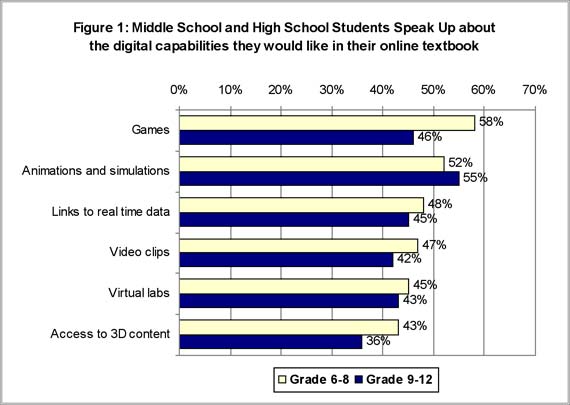Drill Down: If Students Wrote the Book
Middle and high school students describe the digital capabilities they want in online textbooks.
- By THE Journal Staff
- 08/01/11
Online textbooks are not exactly a new phenomenon. In one way or another, digital content has been a part of classrooms for years. In fact, according to Speak Up data, more than a quarter of all middle school students and a third of all high school students say they now use online textbooks or some other version of online curriculum as part of their regular schoolwork.
When asked to pick the one investment in technology they thought would help their children the most, 64 percent of parents recommended online textbooks and 41 percent of teachers said that was on their wish lists as well.

Source: Project Tomorrow, Speak Up 2010 survey |
When asked what would constitute their dream school, 48 percent of students in the third through fifth grades said online textbooks would be part of it and more than half of all older students said the same thing. However, the data also indicated that students aren't just talking about some kind of e-reader or Kindle when say they want online textbooks. Students want a variety of features and functions that range from keyword searches and electronic highlights to the ability to download information to their smartphones: 40 percent want tools that will help them collaborate with their peers, 43 percent want access to online tutors, and 36 percent want the ability to take online classes.
Data courtesy of Speak Up 2010, an annual national research project produced by Project Tomorrow that surveys K-12 students, teachers, parents, and administrators. |